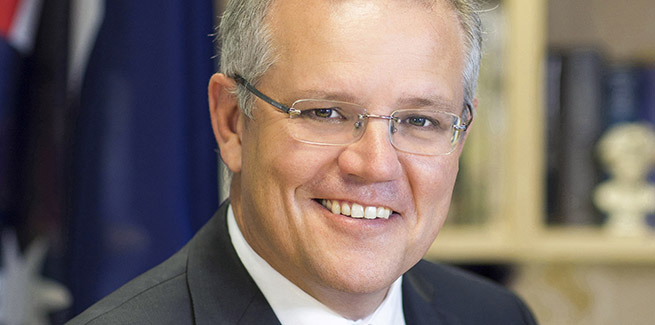On Monday (30 March), Prime Minister Scott Morrison announced a new support package worth a historic $130 billion, aimed at helping employers retain their staff.
Under the new package, the government will subsidise wages with a flat fortnightly “JobKeeper” payment of $1,500 per employee for businesses adversely affected by the coronavirus (COVID-19) outbreak.
The support will be available to full-time and part-time workers, sole traders and casual workers – the latter of which must have been employed for at least 12 months.
According to senior economists at ANZ Research Cherelle Murphy and Catherine Birch, the wage subsidy will “undoubtedly lower unemployment” relative to their previous forecasts.
Prior to the announcement, the economists were expecting the unemployment rate to rise to a peak of 13 per cent in the second quarter of 2020 (2Q20), before falling to 8 per cent in 4Q20.
“We think the size and reach of the JobKeeper payments should reduce the peak in unemployment – the economic version of ‘flattening the curve’,” the economists noted.
As a result, the ANZ Research economists said they would now “reassess” their outlook for both unemployment and GDP.
Meanwhile, AMP Capital chief economist Shane Oliver said that while the new subsidy would not stave off a recession, it would lighten the financial burdens of households and businesses by providing them with some level of income certainty.
“It’s unlikely that fiscal stimulus will be able to keep Australia out of recession over March/June quarters,” he said.
“It won’t stop the virus and it won’t boost spending when people are locked up inside such that they can’t spend as they usually do.”
He added: “But it will help protect the economy from collateral damage by minimising business failures and household defaults and it will help the economy bounce back when the time comes to emerge from ‘hibernation’.”
Mortgage holders, renters to breathe ‘sigh of relief’
Chairman of the Property Investment Professionals of Australia (PIPA) Peter Koulizos echoed Mr Oliver’s sentiment, adding that the wage subsidy would provide landlords and renters with renewed uncertainty amid concern over their ability to meet financial commitments.
“This policy has prompted a collective sigh of relief of sorts from tenants and landlords as well as everyone employed in the real estate sector nationwide,” Mr Koulizos said.
“The payment will hopefully mean that there doesn’t have to be a philosophical debate over whether tenants or landlords are more worthy of financial support during these difficult times.”
Mr Koulizos continued: “Landlords want to maintain a healthy relationship with tenants but are generally not in the financial position to cover mortgage repayments for months on end.
“The subsidy provides much-needed support for businesses and employees significantly financially impacted by the pandemic, which will ultimately see more people keep the roofs over their heads.”
The government’s wage subsidy supports measures from the banking sector to provide borrowers experiencing hardship with repayment holidays, as a means to providing them with certainty amid challenging economic conditions.
This latest announcement from the government builds on a raft of measures introduced this month in response to the increasingly evident economic impact of the coronavirus outbreak.
The government’s actions have included measures to stimulate the flow of credit to households and businesses and provide income support for low-income households.
When including financial sector assistance from the Reserve Bank of Australia, the government’s stimulus support totals over $320 billion – equivalent to over 16 per cent of GDP.
[Related: Government announces historic $130bn support package]
 ;
;
